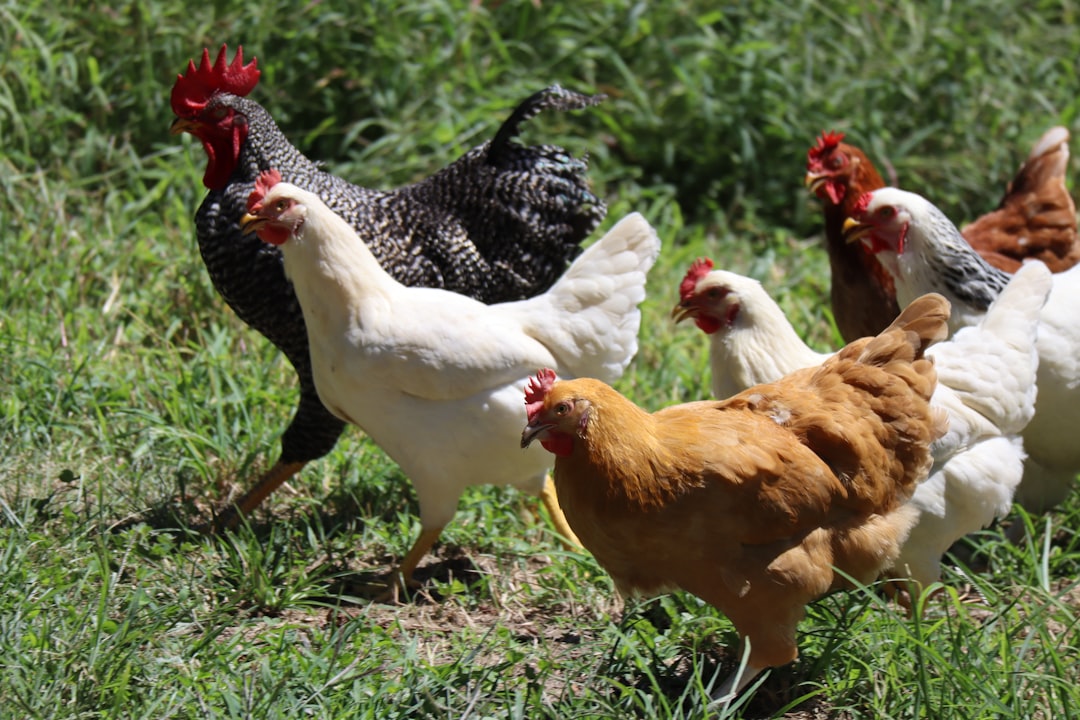As the global demand for poultry products continues to rise, the need for sustainable and efficient feed sources becomes increasingly critical. Traditional feed ingredients, primarily grains like corn and soybean meal, are facing challenges such as price volatility, environmental concerns, and competition with human food needs. To address these issues, alternative feed sources such as insect protein and algae are emerging as viable solutions. This blog post explores these alternatives and their potential to enhance sustainability in poultry production.
1. Insect Protein: A Sustainable Solution
Insects are gaining recognition as a sustainable protein source for poultry due to their high nutritional value and low environmental impact. They can be reared on organic waste materials, converting by-products into high-quality protein.
-
Nutritional Benefits: Insects such as Black Soldier Fly (BSF) larvae are rich in protein (up to 45% dry weight) and essential fatty acids, making them an excellent feed ingredient for broilers and layers. Studies have shown that incorporating insect protein can improve growth rates and feed conversion ratios while enhancing the overall health of poultry.
-
Environmental Impact: Rearing insects requires significantly less land, water, and feed compared to conventional livestock. This efficient conversion of waste into protein not only reduces greenhouse gas emissions but also helps mitigate the environmental footprint of poultry production.
-
Implementation: Farmers can establish on-farm insect production systems to reduce reliance on external feed sources while promoting a circular economy by utilizing organic waste materials.
2. Algae: A Nutrient-Rich Feed Ingredient
Algae are another promising alternative feed source that offers numerous benefits for poultry nutrition.
-
Nutritional Profile: Algae, particularly microalgae like Spirulina and Chlorella, boast high protein content (up to 50-70%) along with essential amino acids, vitamins, and omega-3 fatty acids. Incorporating algae into poultry diets has been shown to enhance growth performance, egg production, and meat quality while providing health benefits through antioxidants that boost the immune system.
-
Sustainability: Algae cultivation can be done in various environments, including wastewater treatment systems, making it a sustainable option that contributes to nutrient recycling. Additionally, algae can help reduce the reliance on traditional feed crops that compete with human food supplies.
-
Research Needs: While the potential of algae in poultry diets is significant, further research is needed to determine optimal inclusion rates and formulations to maximize benefits without compromising overall diet balance.
3. Agro-Industrial By-Products
Utilizing agro-industrial by-products is another effective strategy for reducing reliance on conventional grains.
-
Examples of By-Products: Ingredients such as rice bran, molasses, banana peel meal, and brewers' grains can be incorporated into poultry diets. These by-products not only provide nutritional value but also help reduce waste from food processing industries.
-
Cost-Effectiveness: By using these alternative ingredients, farmers can lower feed costs while maintaining or improving production efficiency. For instance, studies have indicated that replacing maize with yam tuber waste meal does not negatively affect growth performance in broilers.
4. The Importance of Balanced Diets
While alternative feed sources present exciting opportunities for enhancing sustainability in poultry farming, it is crucial to ensure that any new ingredients are nutritionally balanced.
-
Nutritional Assessment: Regularly assess the nutritional content of alternative feeds to ensure they meet the specific requirements of broilers and layers at various stages of production.
-
Formulation Strategies: Collaborate with animal nutritionists to formulate balanced diets that incorporate alternative feeds without compromising bird health or productivity.
Conclusion
The integration of alternative feed sources such as insect protein, algae, and agro-industrial by-products into poultry diets represents a significant step towards enhancing sustainability in poultry production. By reducing reliance on conventional grains, these alternatives not only address economic concerns but also contribute to environmental conservation efforts. As research continues to evolve in this area, poultry producers have the opportunity to adopt innovative feeding strategies that promote both profitability and sustainability in their operations. Embracing these alternatives will be crucial for meeting the growing global demand for poultry products while ensuring responsible agricultural practices.
Citations:
- https://www.frontiersin.org/journals/veterinary-science/articles/10.3389/fvets.2024.1382163/full
- https://www.wur.nl/upload_mm/2/8/0/f26765b9-98b2-49a7-ae43-5251c5b694f6_234247%5B1%5D
- https://www.linkedin.com/pulse/algae-reduce-cost-poultry-feed-dr-meesam-raza
- https://www.evergreenlabs.org/post/cut-costs-go-green-feed-your-flock-sustainable-chicken-feed-solutions
- https://nofima.com/projects/the-use-of-live-insect-larvae-to-improve-sustainability-and-animal-welfare-of-organic-chicken-production/
- https://pmc.ncbi.nlm.nih.gov/articles/PMC11041637/
- https://farmingfuturefood.com/putting-insects-and-algae-on-the-menu-everything-you-need-to-know-about-alternative-feeds/
- https://celitron.com/en/blog/insect-based-protein-for-animal-feed-a-sustainable-alternative-for-livestock-and-pets
- https://wikifarmer.com/library/en/article/non-conventional-feed-sources-ncfs-for-sustainable-poultry-farming

Comments
No comments yet. Be the first to comment!
You must be logged in to comment. Login